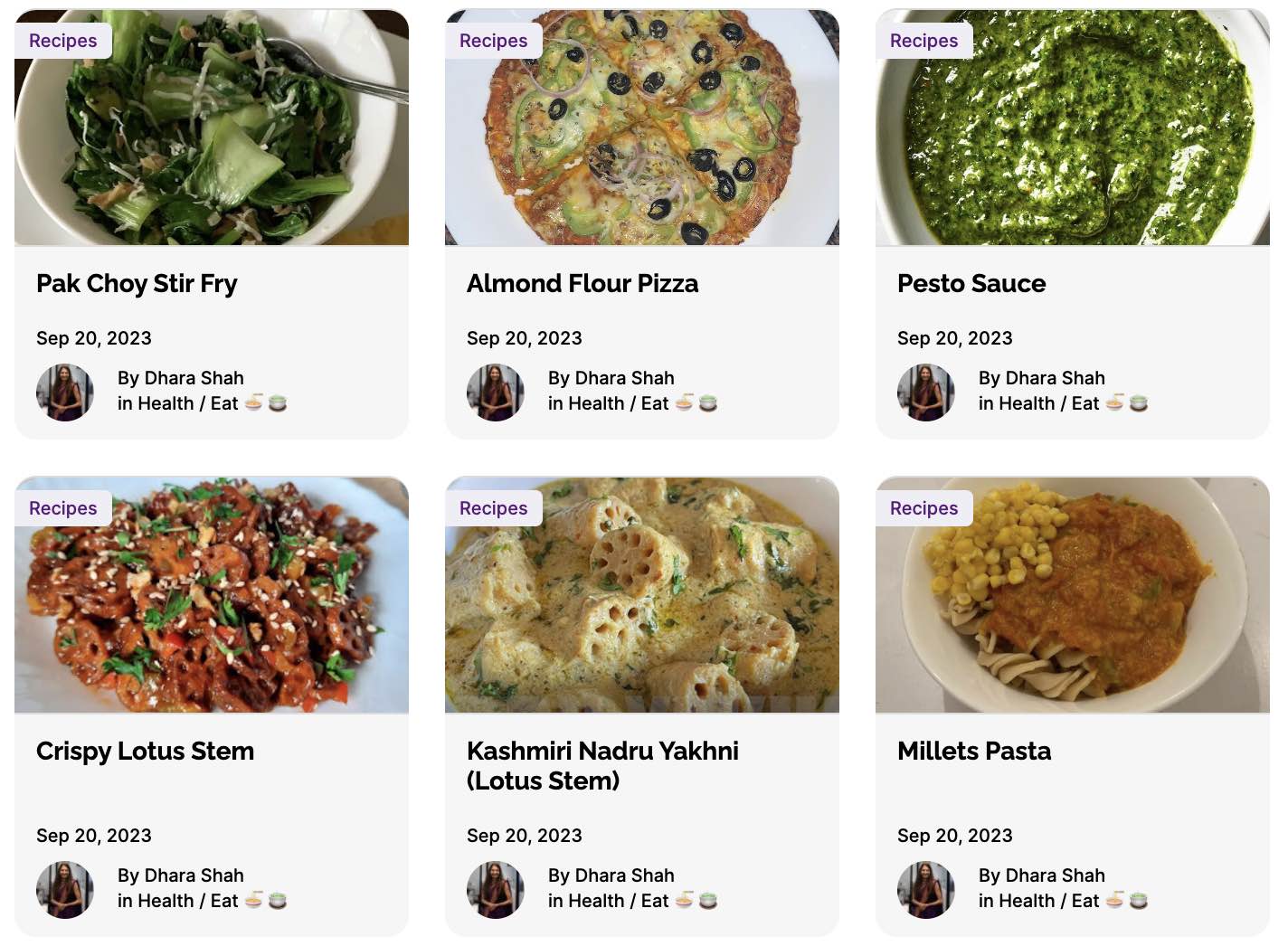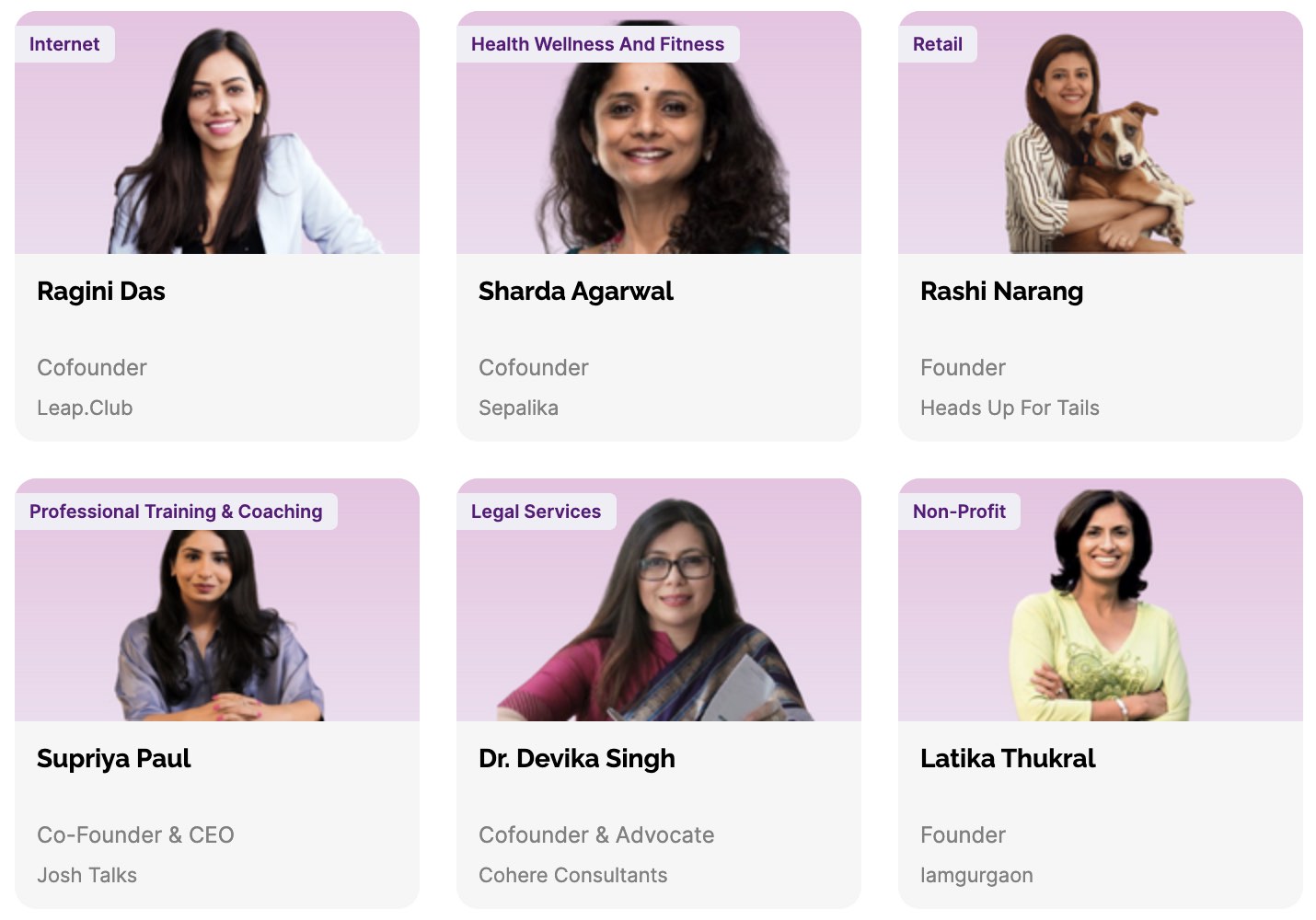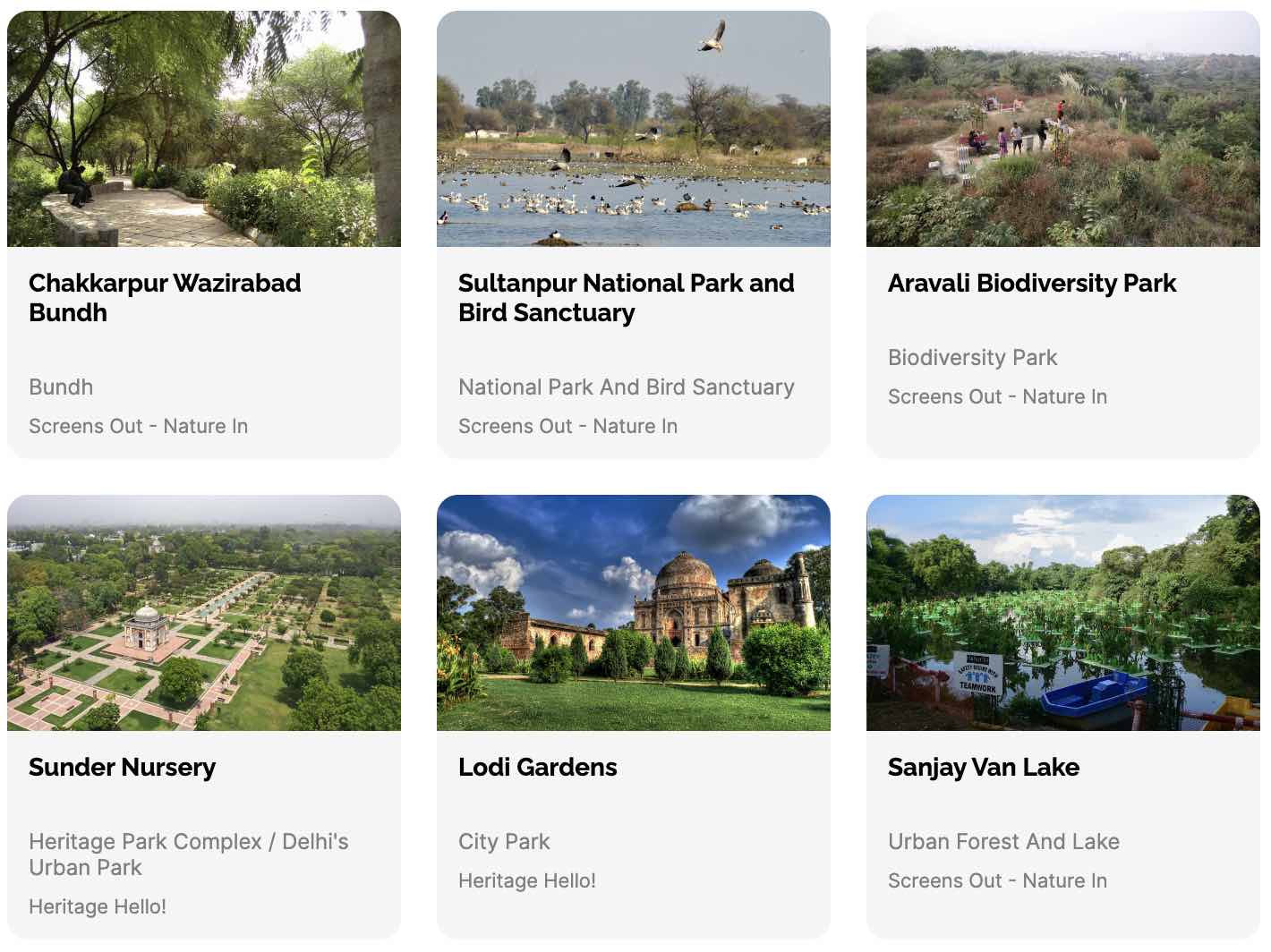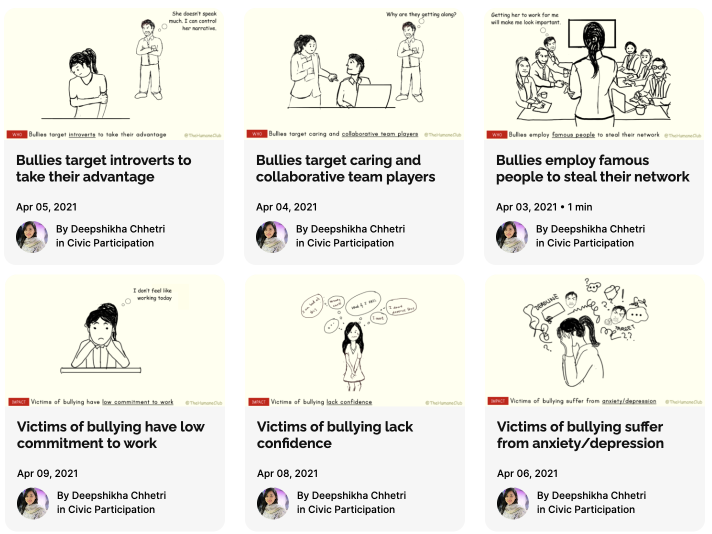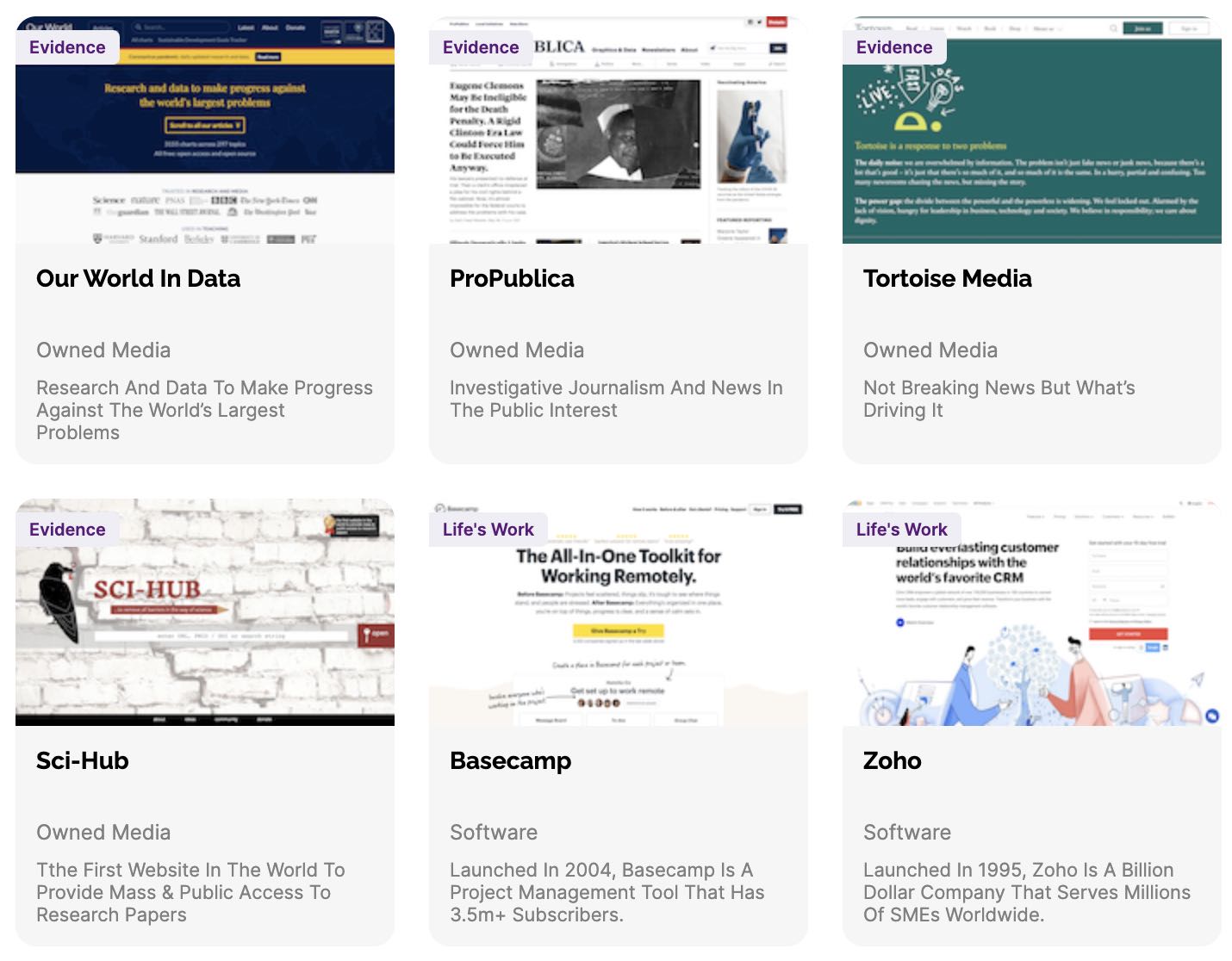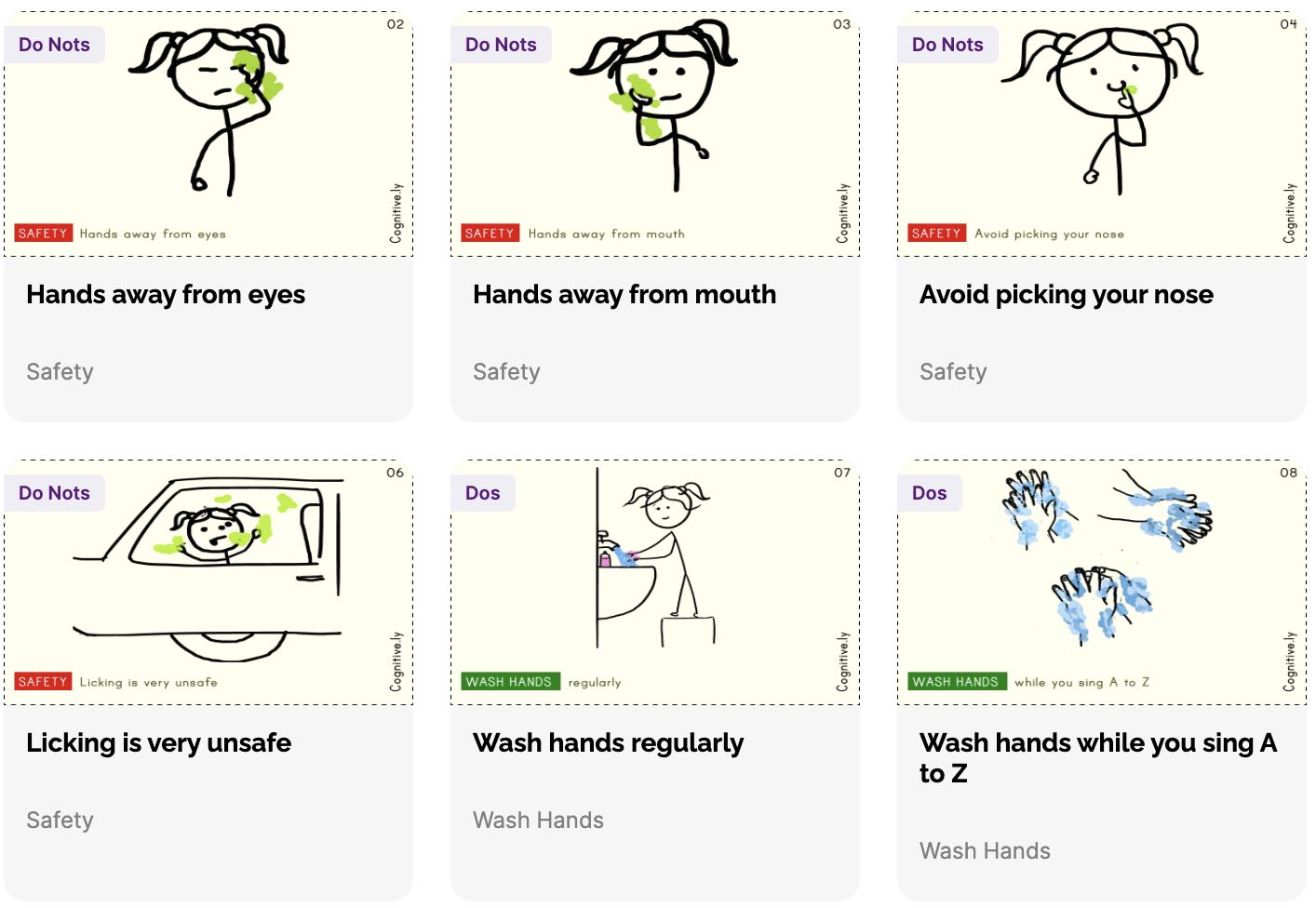Indian School of Public Policy: Media Skills for Professionals
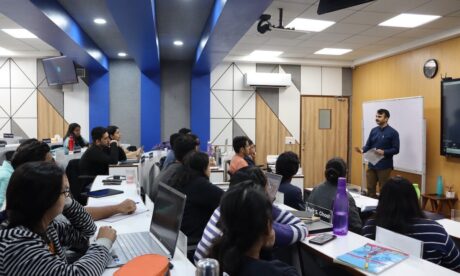
Today, I spent some time at the Indian School of Public Policy discussing media skills for professionals. We discussed what media is and why and how scholars need to build media skills.
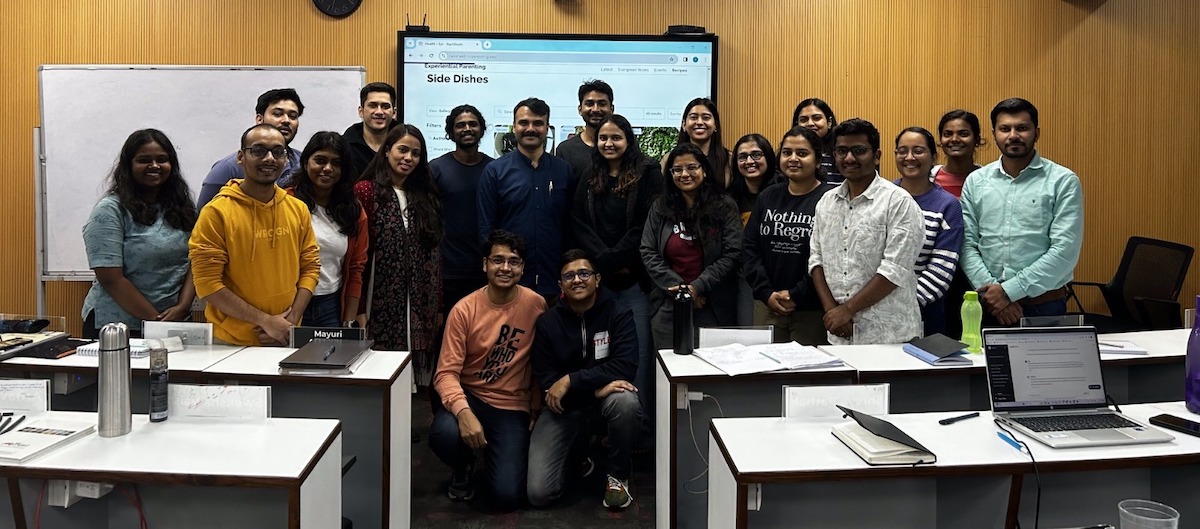
Understanding Media
We produce media because
Humans are Information Processing Machines.
What is media
The Three Big Components that form Media
Who should you produce for
You need to build an audience because, while there is freedom of speech, there isn’t freedom of reach.
Small Media is By Nerds For Nerds
Which niche to pick up
Live your Narrative; Narrate your Life.
On What
Can it only be about work? No. Allow yourself diverse avenues for expression, forming and sharing different perspectives. For instance, as a full-time professional, I cannot always keep talking about artificial intelligence — that would be too cognitively demanding for me. Therefore, I run different media properties, and each spans a different aspect of my life.
- 90% of my content on LinkedIn is either on product management or artificial intelligence. 10% is personal.
- 90% of my content on Instagram is about appreciating the finer aspects of life, while 10% can be professional.
- On NariShakti.in, I write about parenting.
How Could You Market Public Policy To Lay Audiences? One of the challenges that a student shared was how to communicate something as abstract as public policy to lay audiences. We discussed the possibility of doing a small video series called – “Did you want X? Then work on public policy.”
- Did you want oxygen during the deadly second Covid-19 wave?
- Do you want an affordable laptop even if the supply chains in China collapse?
- Are you wary of air pollution in Delhi and want India to adopt more electric vehicles?
- Do you want your cities to be calming on the eyes and not have billboards everywhere?
These are all questions whose answers lie in public policy. Want to make an impact? Go study public policy!
How Often
Until recently, I always believed that if I wrote something, it needed to be a masterpiece, and because of that, I never wrote. A close journalist friend kept pushing me to write. And then, when I started writing, I could produce near-perfect publications, maybe once in six months. Media doesn’t work like that. You will need to constantly produce information so there is no lull.
Example: Upon close observation, it’s apparent that our current Prime Minister possesses outstanding content strategy.
- Though relatively few, he has overseen numerous historic moments as India’s Prime Minister that will be remembered in history. These include significant reforms like GST, the Insolvency and Bankruptcy Code, the revocation of Article 370, RERA, The Aadhaar Act, Jan Dhan Yojana, Ujjwala Yojana, and the criminalization of Triple Talaq. In terms of content, these are akin to original, well-researched pieces that are rare but become central to one’s body of work.
- On the other side, you’ll notice the Prime Minister frequently tweets birthday wishes to world leaders, shares everyday human interest stories, and reminds the nation of past events. While these may be engaging at the moment and plentiful in number, their strategic value is limited.
- In between these two extremes lies programming like the monthly ‘Mann Ki Baat’ series. Although not strategically critical, it provides consistent content to his core constituency in a structured manner.
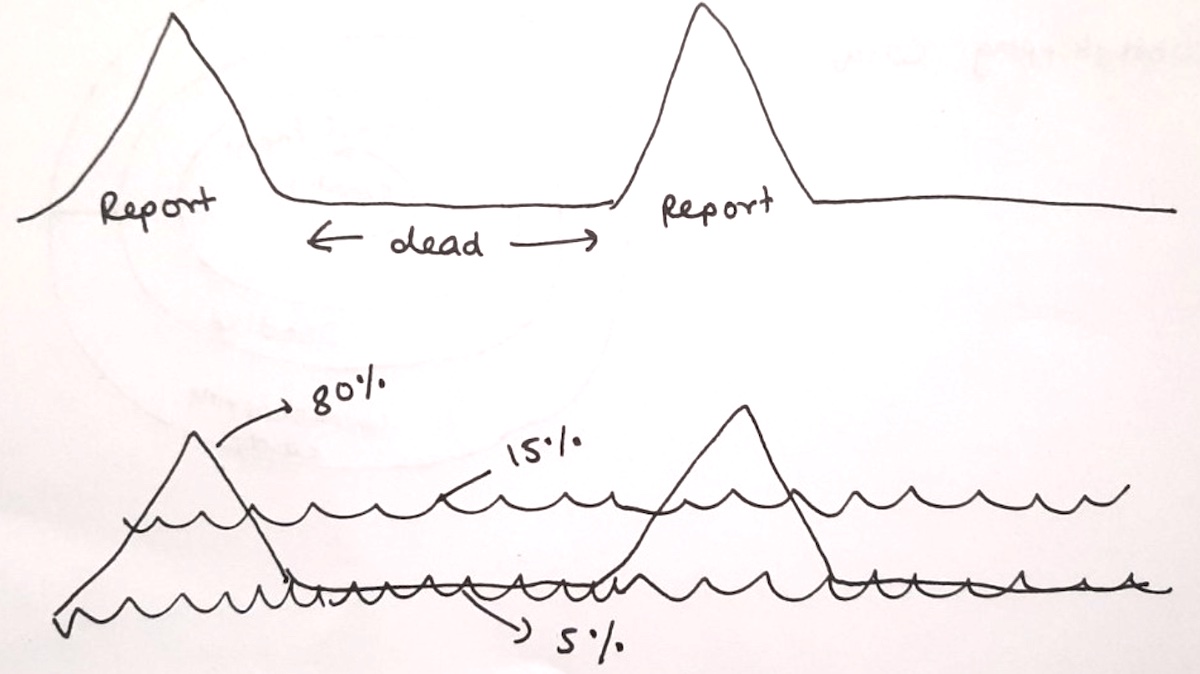
How well
Production quality matters.
For instance, NAS Daily is a YouTube channel where the creator shares fascinating global stories in one-minute segments. He could have easily narrated these tales from the comfort of his home. However, he chose to travel the world, capturing stunning visuals to complement his narratives. This approach enhances his authenticity as a content producer and folds the details — content strategy, editorial values, and production techniques into his work.
Where to get ideas from
Observe keenly, and you’ll notice patterns among content creators. They typically employ a mix of approaches:
- If their subject is complex (like teaching math), they simplify it for their audience. If it’s fast-moving (such as the War in Ukraine), they stay updated and provide summaries of the evolving situation. Then, there are topics like the evolution of Large Language Models, which are both rapid and complex.
- Cross-functional experts have an added advantage. They apply knowledge from one domain to another, creating unique perspectives through the combination, expansion, contraction, and interaction of ideas from various disciplines.
- Some creators regularly engage with people, places, and books, turning these interviews, travels, reading, and interactions into content.
- Finally, there are original thinkers who often offer a few profound insights.
There could be more variations.
How to Media
Content creation doesn’t happen magically. Behind every successful content operation, there is an extreme amount of rigor that people and teams put in.
Rigor in List Building
Great content creators build, curate, and maintain lists of people, places, publications, websites, social handles, newsletters, etc. — anyone who is speaking meaningful stuff within their topic of interest. For example, Climate Link is a list of 400+ research papers on climate change.

Collect Evergreen Notes
As you live your life, keenly observe, reason with yourself, build hypotheses and predictions and log them. The goal is to start writing work-in-progress Evergreen Notes. The constant documentation of logging of everyday life and Aha moments will convert fleeting moments into stateful, recorded history.
Process Evergreen Notes
Later, reflect on everything you’ve captured today and process that information:
- Rewrite it in your words
- See if there is overlap or connections with other evergreen notes
- Ensure that each evergreen note is an atomic idea
- Headline them in a way that you’ll remember
During this step, you’ll start noticing that you are leaning towards certain values or insights. You should convert those into aphorisms and use them everywhere.

For example, Nassim Nicholas Taleb is a prolific writer and possibly one of the few original thinkers in the modern era. He has condensed his entire body of work into key phrases, words, and aphorisms like black swan, convex, anti-fragility, Fat Tony, etc. Whenever he talks about the news — politics, foreign affairs, health policy, war, financial news — he uses these aphorisms. Over a period of time, these aphorisms have become a shared vocabulary between him and his audience resulting in:
- Even if you know the news, you still want to read Taleb’s take on the news in his aphorisms.
- You start using Taleb’s aphorisms in everyday life resulting in new audiences knowing about Taleb’s work.
Over time, you will accumulate a library of thousands of evergreen notes that serve as the foundational content for the posts you wish to create.
Connect Evergreen Notes into Posts
Each post should be you holding the hand of your audience and taking them on a guided tour of your library, but with a unique perspective.
Consider this example, which might seem a bit abstract at first. Imagine you have accumulated 50 evergreen notes providing evidence that the government is intensifying its focus on rail infrastructure to reduce logistics costs. Using this information, you could craft two distinct blog posts:
- ‘Why You Should Start Buying Shares in E-Commerce Companies: Insights from Rail Infrastructure Developments.’
- ‘Empowering Small Business Owners: How Improved Rail Infrastructure Can Open Up New Markets.’
In these posts, your personal insights, hypotheses, or opinions represent the ‘nutgraf’ – the core message – and the evergreen notes provide the supporting details and context. The nutgraf might be 100-300 words but the evergreen notes pad it up into a meaningful read.
Case Study: NariShakti.in
This is a women leadership blog run by Dhara Shah.
Niche Topic
It builds on her leverage and lived experiences of being a working mother and a woman entrepreneur. This content operation is sustainable because it simply her living her life. Sure, SEO and demand research can help optimize but it won’t fundamentally change what she does.
Rigor
She rigorously records things. Top 4 of the 9 pieces of content with the highest traffic are these lists. As researchers and scholars, you should too!
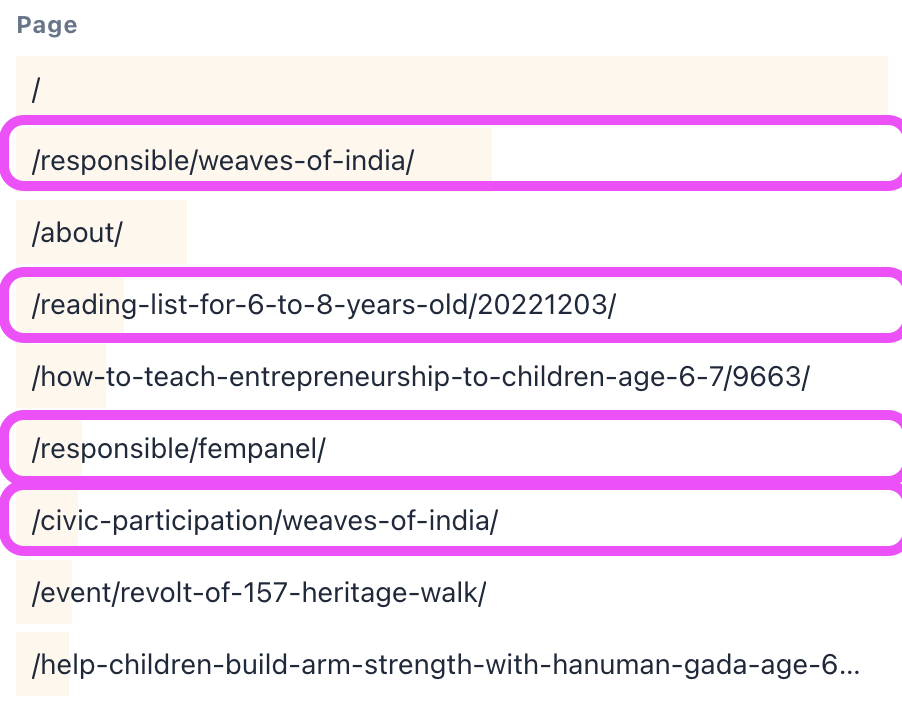
Evergreen Notes
On a near everyday basis, whatever interesting happens, she logs it as an Evergreen Notes – narishakti.in/sabi

In the last 30 days, one of the pieces of content that has received a tonne of traffic from SEO is 154-word Evergreen Note on how to introduce ChatGPT to 7-year-olds. This post is absolutely contrarian to SEO rules. There is no cover image, no SEO keywords, not even the typical 300 words, yet it has got this traffic. Go read it – narishakti.in/evergreen-notes/chatgpt
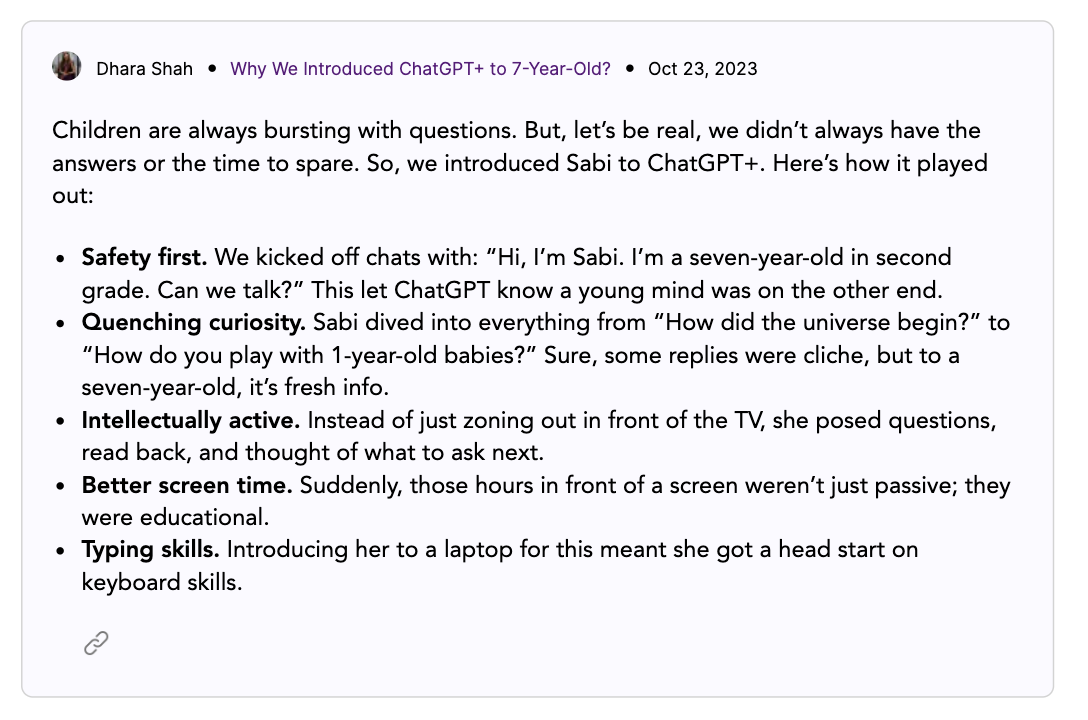
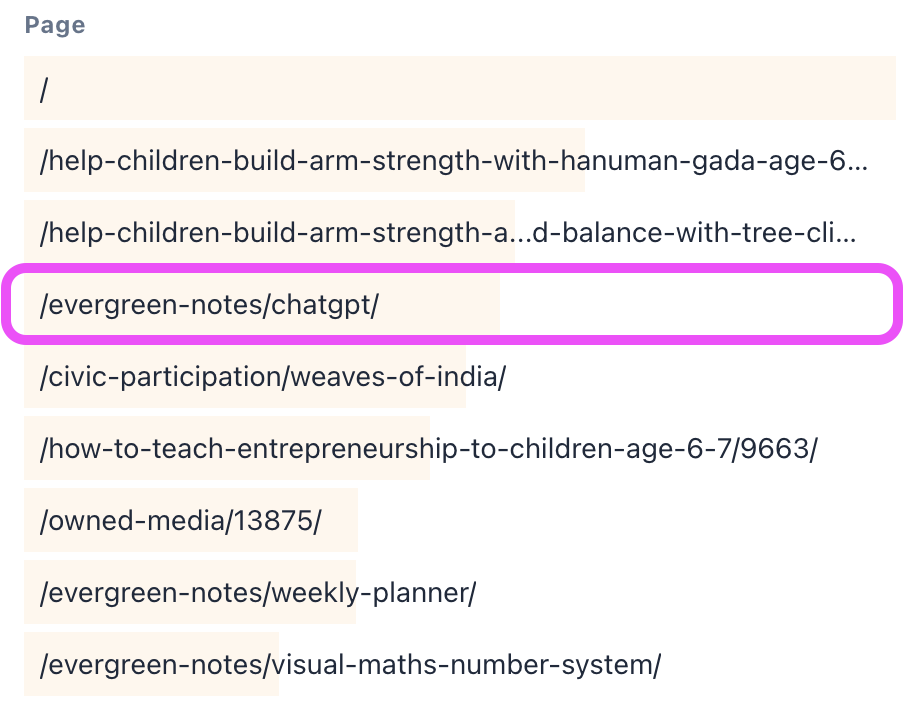
Blog Posts
Embed Evergreen Notes into Posts. Patterns and lived experiences from the Evergreen Notes feed into these detailed 2000-4000 word How To blogposts. For example, the image presents a snapshot of a blog post. It highlights sections specifically written for the blog (in red), alongside parts that are Evergreen Notes (in green), previously written and embedded into the post. Go check out how it looks narishakti.in/how-to-teach-entrepreneurship-to-children-age-6-7/9663/

Embed Lists into Posts. Inside of you can embed various lists. For example, in this post on teaching how to read to children, you could embed the reading list. Check it out in narishakti.in/how-to-cultivate-a-habit-of-reading-fiction-in-children-aged-5-to-7/8817/
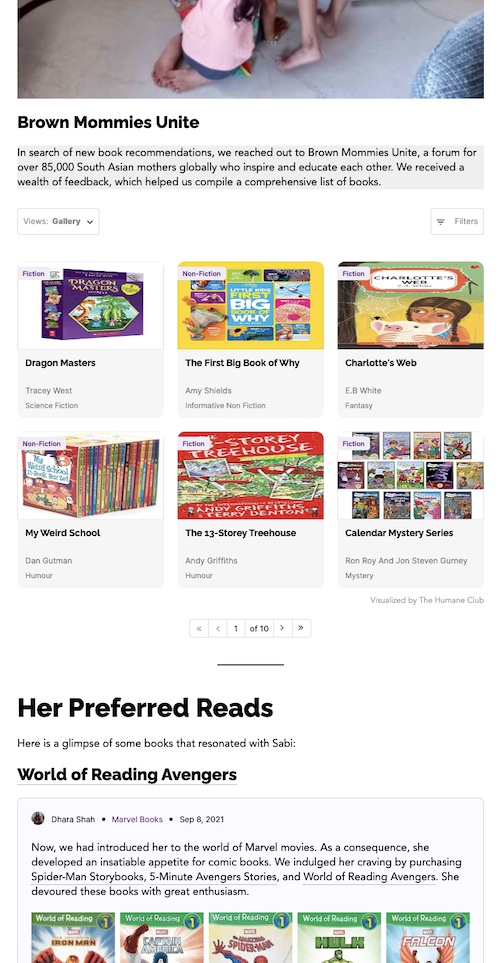
Body of Work
Over a period of time, she has ended up building a good body of work on parenting – narishakti.in/parenting. It is slow but sustainable for a professional to maintain on the side.

To conclude — Live life to the fullest, engaging in daily reading, observation, reasoning, and hypothesizing. Document your experiences and thoughts as evergreen notes. Gradually compile these evergreen notes into comprehensive posts, thereby methodically building your body of work over time.

